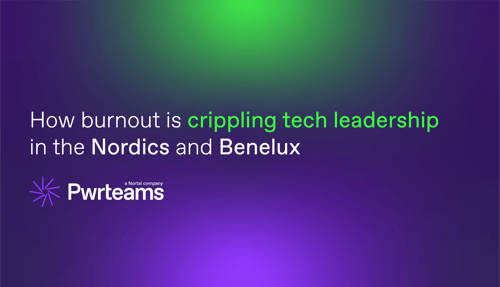Data-Driven Smart Cities: Big Data, Analytics, and Security


Yesterday, living in data-driven smart cities was perceived as a science-fiction fantasy. Today, city administrators have introduced a Chief Data Officer role to make the most of sophisticated data services. Big data and smart cities are two terms more frequently used together. All because, among other, data-driven smart cities have raised the quality of life for people around the globe. We discuss data science developments to find out which urban services could benefit the most from big data and analytics.
Tech-Enabled Improvements for Qualitative Changes
Modern terminology defines smart cities as government entities with common practices of collecting digital data from citizens, infrastructure objects and electronic devices for various administrative and managing purposes. But it’s the ability to leverage data that gives meaning to the smart city notion. Big data and smart cities are a perfect pair for a wide range of urban services including traffic and transportation, data-driven healthcare, water supply, waste management, law enforcement and others.
In a broader sense, data-driven smart cities are at the top level of tech-enabled urban progress. The combination of big data and smart cities solutions promotes innovations and increases educational incentives. It builds a bridge between citizens and tech advancements. Plus, it establishes a digital connection between society and government offering a new level of goods and services to local communities.
The Place of Big Data in Smart City Projects
Data-driven smart cities produce different types of data at a dizzying pace. At the beginning of 2018, 39% of smart city IoT projects were related to traffic management. They are followed by IoT projects to manage utilities, lightning, environmental protection and public safety. The smallest number of IoT projects within a smart city segment relates to electric vehicle charging. Supporting the smart home concept, it’s predicted over one billion connected devices will be installed in private apartments and houses.
Let’s have a closer look at each of the segments extensively using big data and analytics.
Transport and Traffic Management
Transportation is a huge and indispensable constituent of a smart city ecosystem. Living up to the prediction of world population growth and cities becoming more crowded, big data and analytics come to the rescue in transportation. Municipal transportation systems can leverage big data to optimize routes and schedules, decrease traffic congestion and increase environmental friendliness. Big data analytics and historical data help in reducing accidents. By analyzing the history of mishaps, traffic authorities can get the cause of the accidents to prevent them in practice.
The data going back and forth within a traffic infrastructure can optimize goods transportation. Analytics help to find alternative routes and decrease the number of accidents connected with the freight movements. In this way, data-driven smart cities receive improved shipment processes and reduced supply chain waste.
Among other options, data-driven transportation systems can lower the environmental impact, facilitate smart parking applications, improve user experience and add to smart city security.
Some of the key startups:
- Miovision’s expertise ranges from the planning and collaboration software to video-based data collection, traffic data processing and signal management.
- Moovit. Besides their route optimization app, The Moovit Public Transit Index is the biggest repository of transport data and analysis in the world.
- Citymapper constantly improves its routing app which taps into analytics from a variety of other tools including Yelp, Foursquare, Google Maps and Uber.
Utilities and Energy Management
In data-driven smart cities, big data and analytics help utilities to gain operational efficiency. Authorities and citizens start considering not only how to deplete resources but also how to make their use rational. Utility management has witnessed the rise of ‘smart everything:’ smart grids, smart water and smart energy. The rapid distribution of smart grids has enabled analysis of real-time power generation and consumption data. The analytics of power use habits of citizens and industrial objects can help predict the need for the power supply in the future. In practice, a smart grid can redistribute electricity from areas with excess to the spots where it’s really needed.
Big data and smart cities can help in the coordination of wind and solar energy with traditional energy sources. For example, smart sensors can be installed on the renewable energy stations. The data they produce can be processed to find out whether a renewable energy source operates correctly. If it doesn’t, a utility provider can make the required adjustments like fine-tuning the solar panel or changing the wind turbine settings or location.
Initiatives worth mentioning. A UK-based startup, Origami Energy, has managed to get 46 million dollars in funding. Their intelligent software platform uses big data and machine learning to predict demand and behavior patterns to enable flexible use of energy throughout the system. Although the idea is quite common, the implementation is unusual. This technology manages large distributed networks of energy generation through storing assets. These assets are connected to the electricity grid and monitored through an online marketplace. The entrepreneurs claim reduced strain on the grid and cutting carbon emissions. All because the demand and supply of electricity are evenly matched in real time.
Environmental Protection and Sustainability
Data-driven smart cities know how to make use of a treasure trove of data to improve relations between people and nature. The availability of data and new analytical algorithms give researchers grounds to analyze the past and produce forecasts. In particular, they give a better idea about what impact climate and environmental changes may have on human health.
With this knowledge in mind and the reduced margin or error, the researchers can be more accurate identifying areas of potential natural calamities. In this way, cities are better equipped with warning systems to prevent the harmful impact of environmental factors on citizen’s health and well-being.
Too often human well-being means exactly the opposite for nature. To protect the environment from the harmful activities, big data helps authorities carefully observe tendencies in various ecosystems and populations. Armed with data about diverse patterns and behavioral scenarios, specialized departments are able to prevent destructive interventions into environmental ecosystems.
Initiative’s worth mentioning. It’s hard to single out one of several big data environmental projects, because thankfully, there are a number of these initiatives, especially with tech business titans like Google, IBM, HP leading the way. To mention at least one of the most well-intentioned projects, The Great Elephant Census, applies data analytics to provide accurate and up-to-date info about the number and distribution of African elephants. The project has managed to attract wide publicity to a problematic reality.
Public safety and Smart City Security
According to Reuters, the global market of the public safety solutions for data-driven smart cities is expected to grow to approximately USD $336 Billion by 2022. Dubai, Singapore, and London, as well as many US-based cities, have developed the slogan: A smart city is a safe city. Data-enabled programs to make cities safer consist of crime-fighting initiatives. Data analytics is used to identify high-crime locations, prevent crimes, and recognize criminals. Moreover, the smart city security covers public transportation security, critical infrastructure security, disaster management, medical emergency services, and firefighting services.
To work with big data and smart cities effectively, governmental and public efforts should produce crime-preventive infrastructure. Substantial video surveillance programs, sophisticated crime centers, and emergency operations centers make a difference in cities considered data-driven and smart.
The connected infrastructure of smart cities increases the risk of cyberattacks. This threat to smart city security gives no peace to the parties in a city’s ecosystem. By 2020, 70% of national governments will enforce common cybersecurity standards. Ordinary users have to pay special attention to cybersecurity matters. Secure passwords, limited physical access to servers and communication equipment, and end-to-end encryption technologies are several examples of how to do it. Fortunately, users have expressed mounting concern about personal data privacy and loss nowadays. In turn, tech providers can use big data and AI algorithms to prevent, detect, and neutralize hackers with their malicious intentions.
In the case of a smart city, security, every party should be prepared for the worst. In reality, where every asset produces more and more data, loss of personal data might be the least of the evils. Remember the terrifying scenes from disaster movies when the water-distribution system was infected with an unknown, alien virus? This is how the worst scenario looks like. Hackers can interfere with the smart city’s systems and spread viruses across it. Consequences will be unexpected and definitely not pleasant ones. Big data and smart cities together can develop a protection strategy and emergency plans to make our future not only smart but also permanent and secured.
Some of the key players and solutions: Cisco Systems, Inc., NEC Corporation, Huawei Technologies, IBM with a separate mention of Intel’s joint solution with GE and AT&T. It enables a range of local departments to act more safely, cleaner and efficient.
Conclusion
The concept of data-driven smart cities employs data analytics technologies to change the way citizens live, work, and get around. This change is definitely for the better. Big data and smart cities cherish innovations, create new workplaces, and do well for the environment. Despite tangible progress in recent years, the challenges of ubiquitous connectivity continue to grow. It means authorities, tech providers and citizens should ally to make their cities cybersecurity resilient. Fertile land for entrepreneurs, data-driven smart cities are the places where technology can finally increase the quality of life, improve security, and protect nature. Will we see massive prosperity of smart cities in near future? The answer depends on us.
READ ALSO
 September 29, 2025
September 29, 2025
Build your team or extend with ours? Here’s what helps fintech CTOs decide
Read the post September 10, 2025
September 10, 2025
Fixed-price projects vs dedicated teams: A fintech CTO comparison
Read the post September 3, 2025
September 3, 2025
How burnout is crippling tech leadership in the Nordics and Benelux
Read the post September 29, 2025
September 29, 2025
Build your team or extend with ours? Here’s what helps fintech CTOs decide
Read the post September 10, 2025
September 10, 2025
Fixed-price projects vs dedicated teams: A fintech CTO comparison
Read the post September 3, 2025
September 3, 2025
How burnout is crippling tech leadership in the Nordics and Benelux
Read the postWrite your own
success story
with Pwrteams!
Share your details in the form, tell us about your needs, and we'll get back with the next steps.
- Build a stable team with a 95.7% retention rate.
- Boost project agility and scalability with quality intact.
- Forget lock-ins, exit fees, or volume commitments.